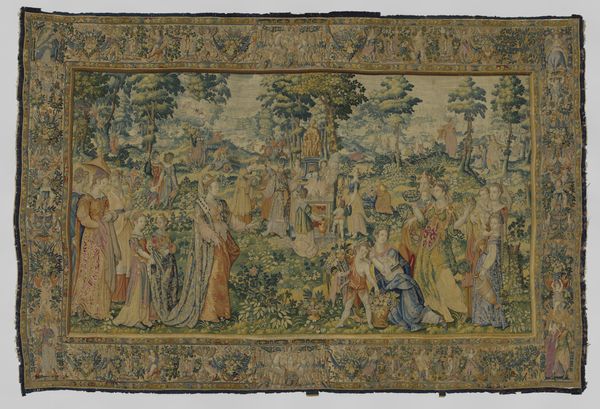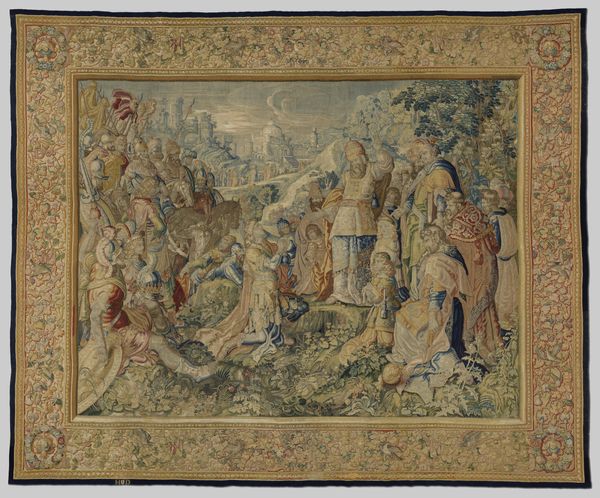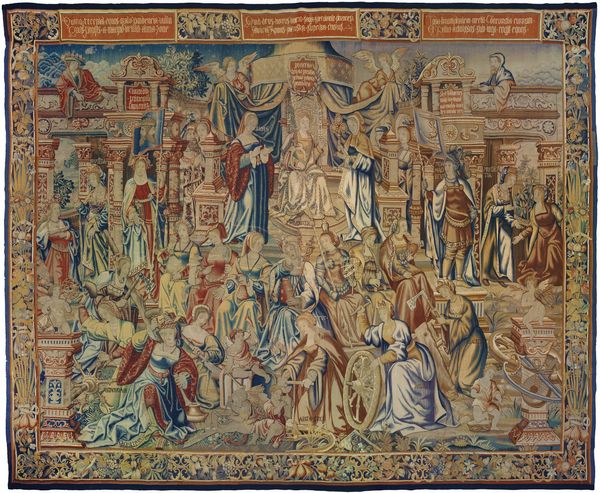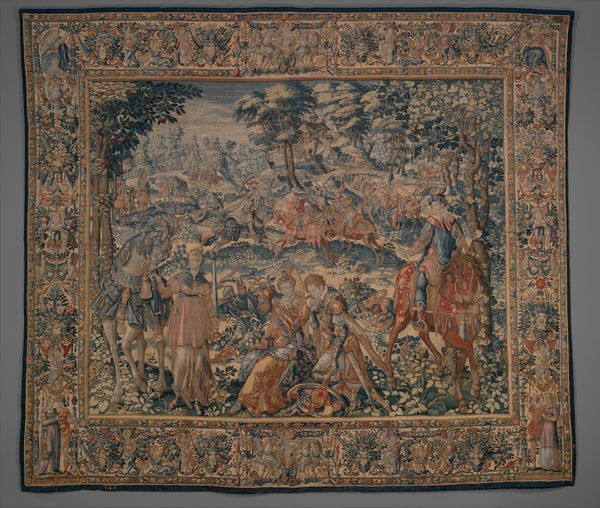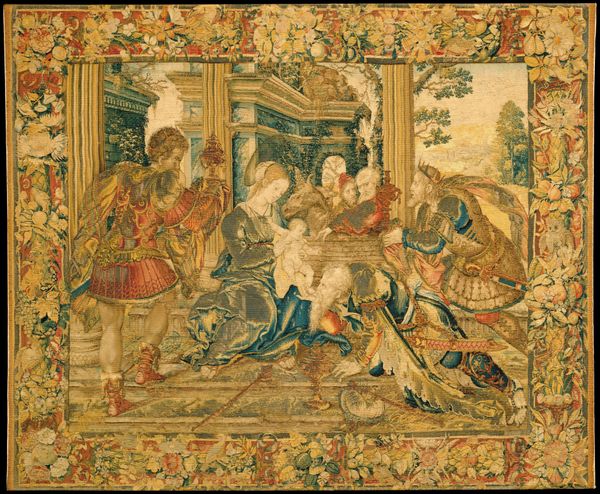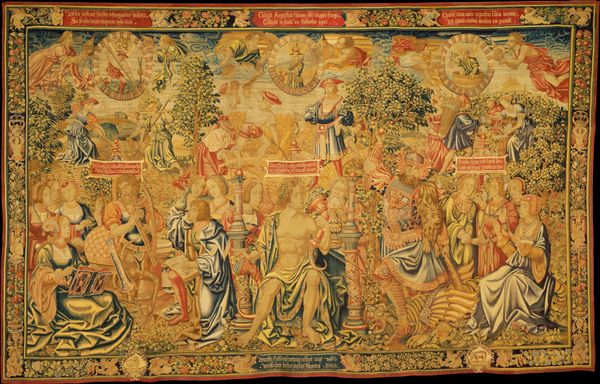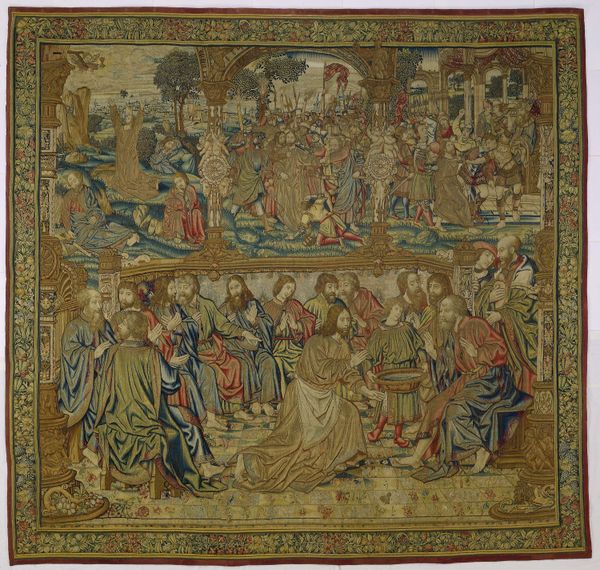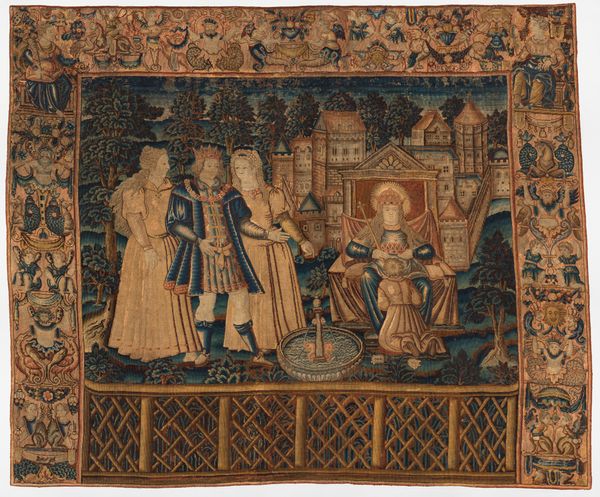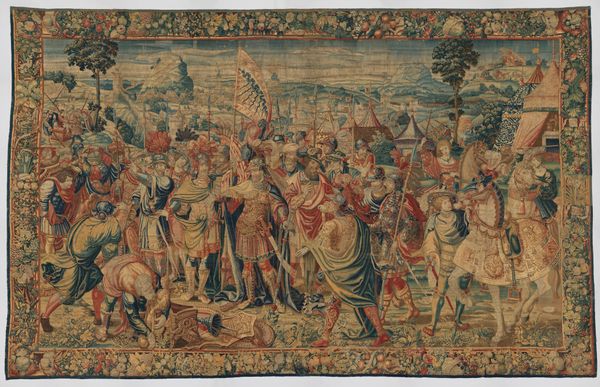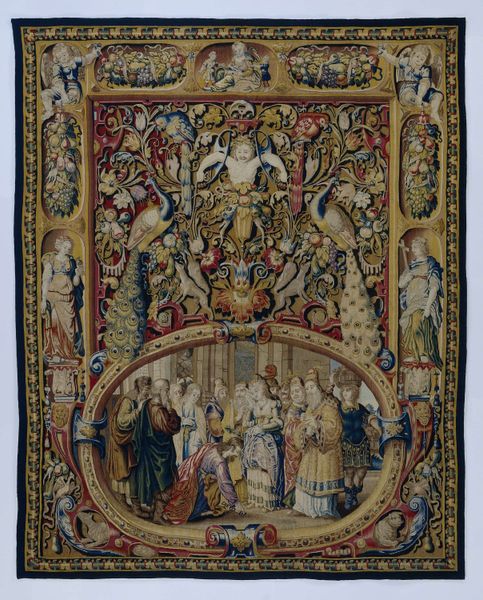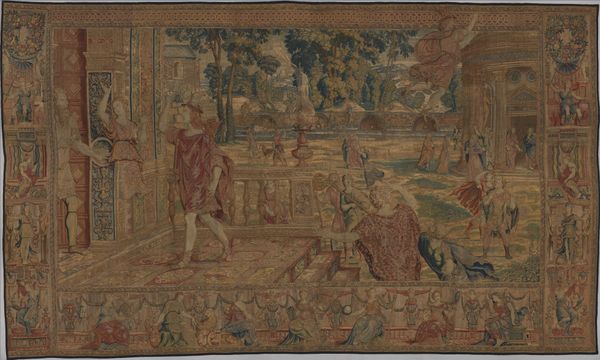
The Garden of False Learning from The Table of Cebes 1550 - 1580
0:00
0:00
textile, sculpture
#
garden
#
narrative-art
#
landscape
#
textile
#
mannerism
#
text
#
oil painting
#
sculpture
#
group-portraits
#
men
#
history-painting
#
musical-instrument
#
decorative-art
Dimensions: H. 110 1/2 x W. 153 1/8 inches (280.7 x 388.9 cm)
Copyright: Public Domain
Curator: This is a tapestry from sometime between 1550 and 1580, titled "The Garden of False Learning from The Table of Cebes." Editor: The pale colors and rather static composition give it an oddly detached feel, as if viewing a theatrical tableau rather than a real scene. It feels very dreamlike. Curator: The tapestry, currently held at the Metropolitan Museum of Art, presents a complex narrative. We see figures grouped into distinct spaces, engaged in various activities. Note the flatness of the weaving, which pushes figures to the foreground despite the attempts to create spatial recession. Editor: Exactly. Who do we think these figures are, and what "false learning" is the tapestry meant to critique? Is it aimed at warning women? Note that men hold all of the books while women focus on dance and musical instruments... Is this a cautionary narrative about gendered expectations and societal restrictions imposed upon women, trapping them in frivolous pursuits, keeping them from serious study? Curator: That is one reading. However, I think we must address the symbolic structure of the image. The balcony separates distinct spaces and denotes specific realms. Observe the clear separation between the garden and the world outside. The architecture even presents an organization of intellectual space...it imposes a structure for how people are to learn within that social hierarchy. Editor: Structure does shape how people think and what their opportunities are! Look at how class is displayed through clothing, literally shaping movement. See the elaborate ornamentation on their garments compared to the peasant workers framed in the scene's border? Curator: Perhaps that points toward wealth. See how those garments dictate the sitter’s posture, demanding formal poses? In contrast, they are not afforded a dynamic sense of naturalism. This adds a subtle layer of social commentary woven within the overall visual impact. Editor: And with that in mind, think about the very nature of the tapestry as medium. It’s a mobile art, it can be taken from room to room, as it also carries a political message. Curator: Precisely. Thinking about "The Garden of False Learning" from these combined perspectives is essential for approaching historical decorative art. Editor: Absolutely. There is beauty here and a subtle narrative.
Comments
No comments
Be the first to comment and join the conversation on the ultimate creative platform.
